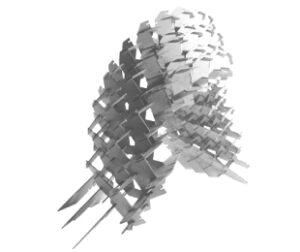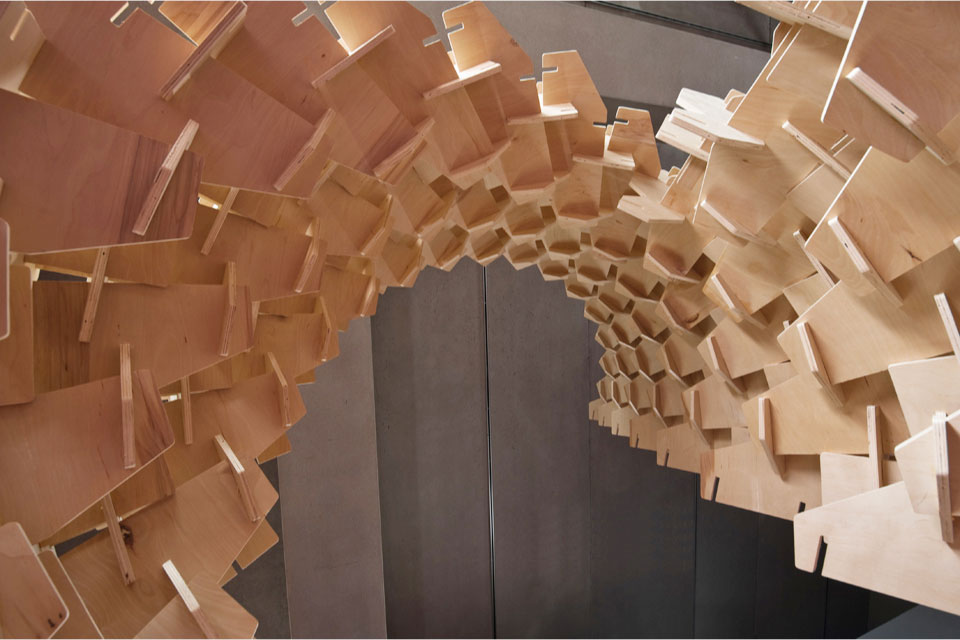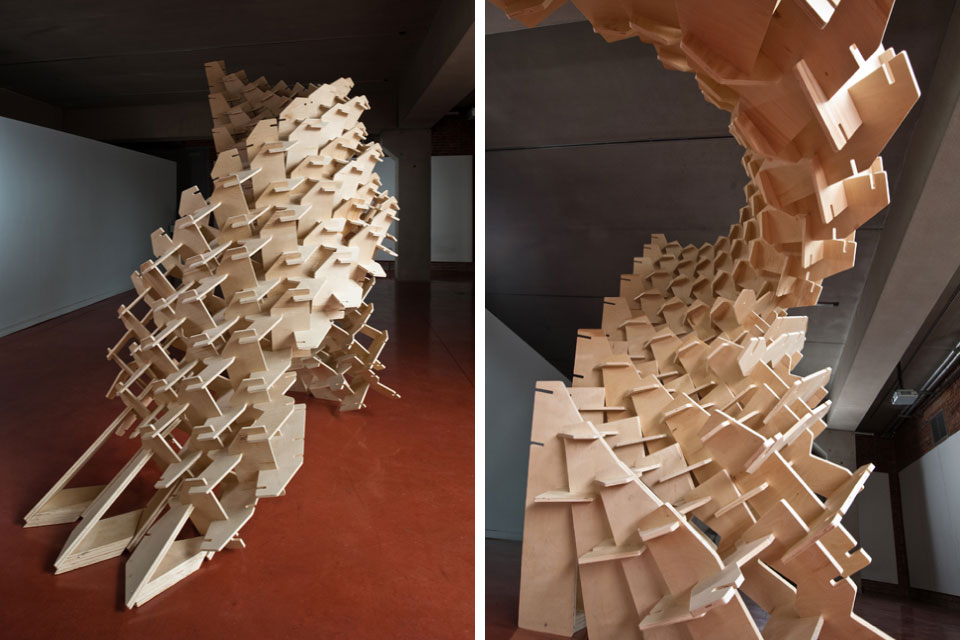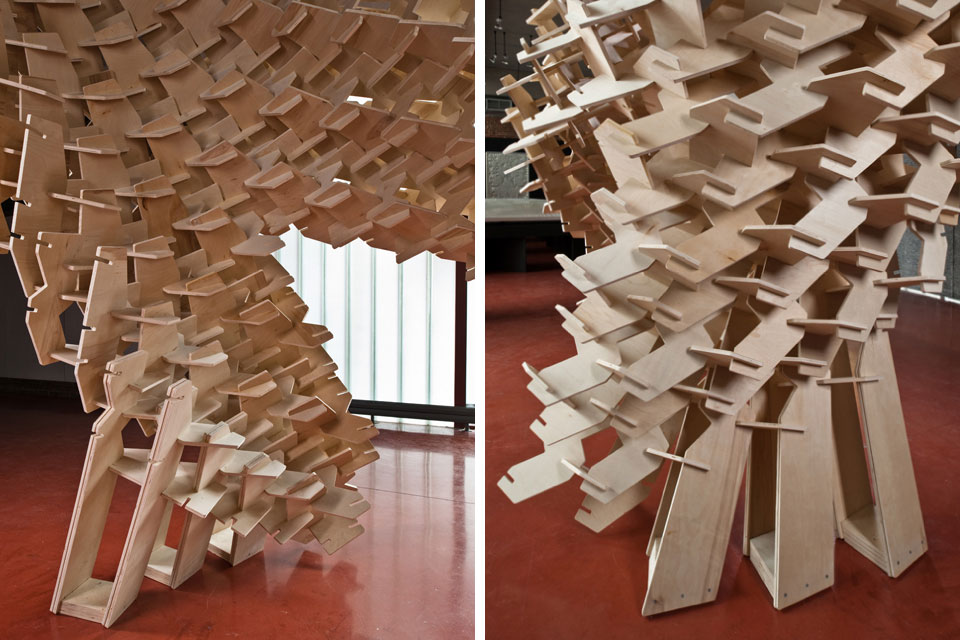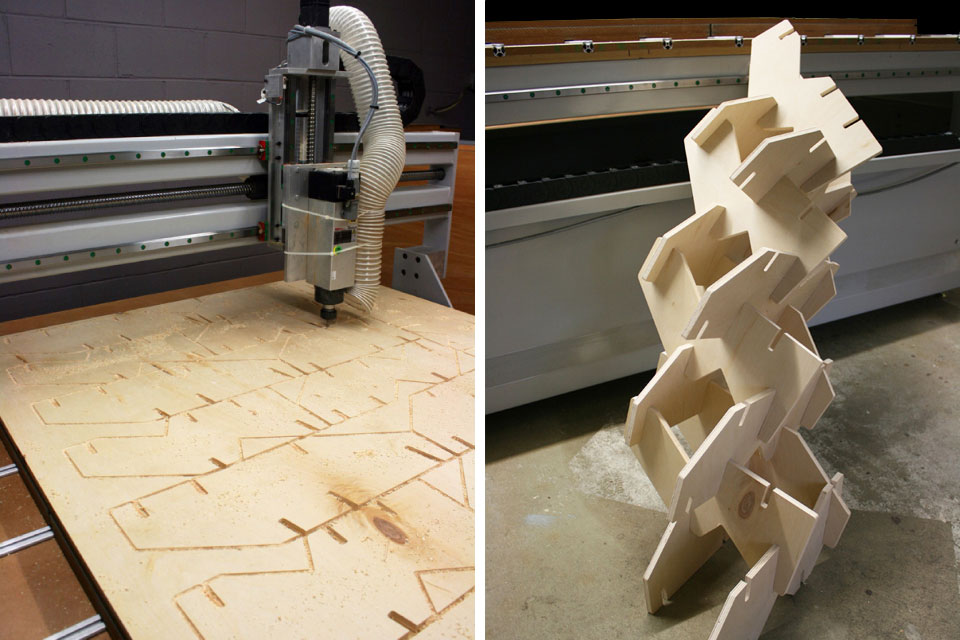Textile Helix
Siegel Gallery, Brooklyn
Two model-based approaches using digital fabrication techniques have been tested in Digital Tracery, an undergraduate research seminar at Pratt Institute School of Architecture – component invention using analogues from nature specifically botanical models, and component mutation interrogating preexisting architectural systems. The model based approach emphasizes the development of part-to-whole relationships through jointed assemblies and privileges expressive tectonics as a means to confront scale and the exigencies of construction.
Textile Helix is a full scale, digitally fabricated installation designed by two students and exhibited in the Siegal Gallery at the Pratt Institute School of Architecture in the fall of 2009. Developed using both analogue and digital parametric modeling, Textile Helix was milled on three axis machine with the constraint that 3D form be geometrically constituted from standard sheet stock. Beginning with the seemingly simple idea to weave a surface out of a limited set of jointed parts that form a continuous enclosure, tectonic and structural innovation were arrived at using off-the-shelf materials to create a surface-active system with no mechanical connections. Designed in collaboration with Chelsea Lipham and Laura Wickesberg.
